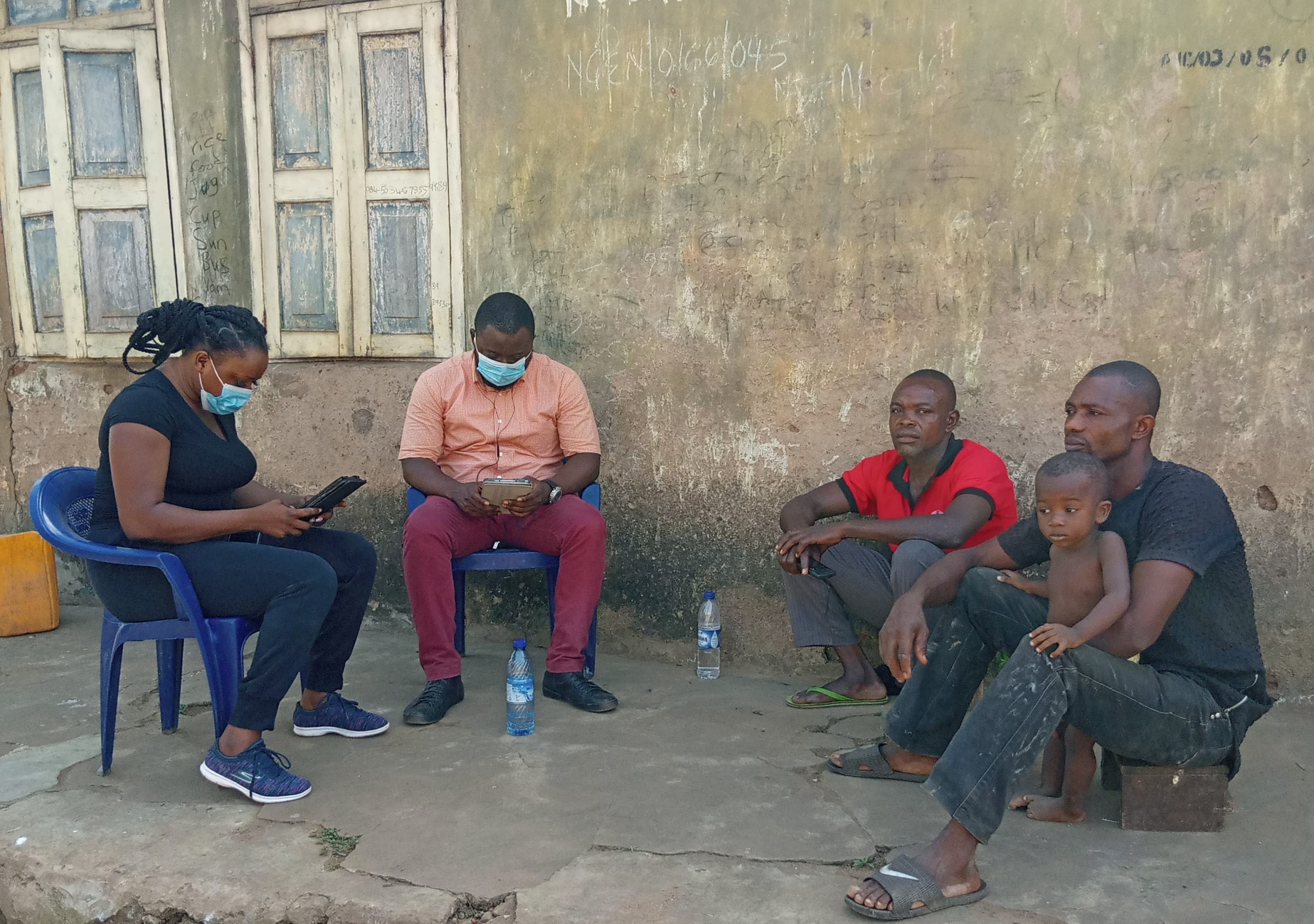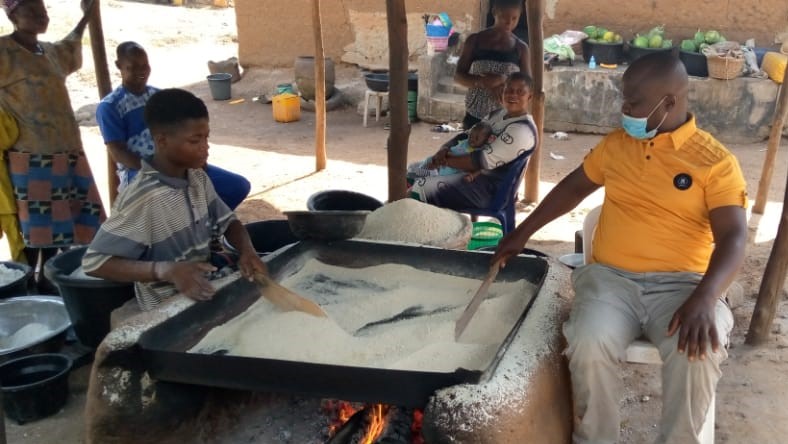Analysing the impact of COVID-19 on food systems and livelihoods in Africa

To better understand the impact that COVID-19 is having on food systems and rural livelihoods in the region, APRA researchers have been conducting a rolling series of telephone-based household surveys and key informant interviews. This blog is based on the findings of these two reports, that were written by Amrita Saha, Marco Carreras and John Thompson.
The first round of surveys and interviews was conducted in seven countries – Ethiopia, Ghana, Kenya, Malawi, Nigeria, Tanzania and Zimbabwe – in June-July 2020. The second round was built on these baseline reports, with the addition of Zambia as an eighth country in October 2020.
Click here to access the country reports.
Since arriving in Sub-Saharan Africa in early 2020, the shockwaves of COVID-19 have hit food systems throughout the region. Many countries, to varying degrees, introduced a series of strict control measures on social and commercial activities with detrimental impacts on food systems in several areas, arguably causing more damage to livelihoods and local economies than the virus itself.
Food and nutrition security at local levels, particularly in Africa, is under the most strain, in spite of global agricultural markets being predicted to remain stable throughout 2021. Further stresses, such as extreme weather events, conflict and insecurity (or a combination of these), and desert locust infestations have added to the pressure for smallholder farmers.
Emerging income-nutrition-livelihood crisis
As efforts to tackle hunger decreased due to the pandemic, there has been an intensification of pre-existing vulnerabilities and inadequacies of Africa’s food systems – understood as “all the elements (environment, people, inputs, processes, infrastructures, institutions, etc.) and activities that relate to the production, processing, distribution, preparation and consumption of food and the outputs of these activities, including socioeconomic and environmental outcomes” (HPLE 2014: 12).
Round 2 findings from October 2020 suggest that the shock of COVID-19 has resulted not so much in a ‘food production crisis’ as an ‘income-nutrition-livelihood crisis’ in some communities and households in the eight countries, mainly from a decline in economic activities, which in turn led to income losses and reduced household purchasing power, and a multitude of food-system wide shocks.
Compared to Round 1, fewer (though still a large proportion) respondents reported a decrease in the number of buyers or traders coming to their village to do business (Stevier Kaiyatsa’s recent three-part blog outlines the decrease of grain buyers in Malawi), excluding in Ethiopia, where marketing activities were largely unaffected.
The availability of transport also declined, while food prices have increased, thus reducing access to vital farm inputs and constraining the movement of goods to local and regional markets. Supplies of staple foods in local markets were also reduced as a result of the trade restrictions, and food prices saw a marked increase.
The loss of income, decrease in food availability and increase in food prices is reflected in local diets, with a sizeable number of households stating that they have been skipping meals and facing a shrinking basket of available foods locally. For example, a large number of households in Kenya (40%), Malawi (34%) and Nigeria (16%) indicated that they “went without eating for a whole day because of a lack of money or other resources”. In Zambia, food availability issues appear particularly stark as nearly half of all respondents reported a decrease in the availability of several food groups. Concurrently, food prices have increased across several major food groups, with the prices of grains, pulses, and nuts and seeds most affected.
The report also outlined that women and girls in Zambia, Kenya and Ghana are encumbered the most by childcare and housework, households continued to report more childcare and housework compared to any other study area. Meanwhile, individuals were still reducing their movements both within and outside their own village, except in Tanzania where travel restrictions have been limited (for more on life in Tanzania following the lifting of restrictions, read this two-part blog series).
However, the effects of COVID-19 restrictions and control measures have not all been negative. Some households have innovated to survive, shifting towards more local production, shorter value chains and diversifying the range of their off-farm livelihood activities (see Ian Scoones’ Zimbabwe blog for an example of how farmers adapted to the challenges brought by COVID-19).

Decrease in emergency assistance
As government COVID-19 restrictions eased in most countries, a general decrease in households receiving any type of emergency assistance was observed, with many stating they had yet to receive any support since June-July, especially those in Kenya, Malawi, Nigeria, Tanzania and Ghana (see this blog for the agricultural implications of the pandemic in Ghana). Family, friends and local religious organisations remain important sources of support for some households, particularly in Ethiopia, Malawi and Zambia.
Mixed results
The APRA assessments found both positive and negative examples of the ability to households to continue their farming activities and non-farm economic enterprises during the COVID-19 crisis, depending on the community and country in question. For example, most respondents in Ethiopia, Ghana, Kenya, Malawi and Tanzania reported no major changes in their own participation in farming activities since the first round, but did experience a decrease in participation in business or household enterprises (except in Ethiopia). In Nigeria, Zambia and Zimbabwe, though, most respondents continued to report a decrease in their participation in farming activities as well as in their business activities. Conversely, in Ghana, farmers’ participation in both farm and off-farm economic activities has generally improved since June-July.
The impact on farm labour also saw mixed results in the different study countries. Most of the respondents in Ethiopia reported that they had managed to hire farm workers (see Agajie Tesfaye’s three-part blog series on the impact of COVID-19 on daily labourers and rice commercialisation). This was also the case in Tanzania, Zambia and Zimbabwe and Nigeria (for more on the unintended consequences of the lockdown in Nigeria, read this blog) but access to hired labour continued to be disrupted in Ghana, Kenya and Malawi. However, in several countries labour costs were on the rise, forming obstacles for many farm operations.
Way forward
For the majority of households in the sample communities, APRA’s multi-country research indicates that they have experienced significant hardship since the onset of COVID-19, with many facing a loss of income, reduced purchasing power, rising food prices and decreased food availability. Farming and business activities have also been affected. While some households have been able to cope with the crisis in innovative ways in the short-term, the intersection of COVID-19 restrictions with other environmental and political economic shocks and stresses has made it hard for others to adapt, particularly with little external assistance.
Although only a second ‘snapshot’ of changing conditions, these results suggest that it will be important to continue to track these households and communities over time to assess how the pandemic is unfolding in different parts of Sub-Saharan Africa. As several countries recently reported an increase in the number of COVID-19 cases, APRA is planning to return to the study communities in the first quarter of 2021 to analyse how local people, governments and food systems are responding.
APRA researchers interview households in Adao Abeokuta suburb, Ogun State, Nigeria. Credit: Anas Umar
Please note: During this time of uncertainty caused by the COVID19 pandemic, as for many at this time, some of our APRA work may well be affected but we aim to continue to post regular blogs and news updates on agricultural policy and research.
